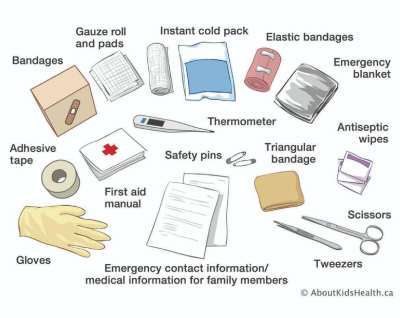Road Trauma
Road Trauma is also called Road Accident. It is one of the chief causes for the rise in mortality rate around the world. There is perennial concern over the steep increase in accidents, forcing governments, organizations and institutions to create awareness on the subject. While that is the main focus and its viability is being brain-stormed across the world on a war-footing, let’s discuss the other aspects of road trauma, like causes, prevention, consequences, safety and first-aid.
Causes and Prevention
Insufficient driving knowledge is the use of an automobile with little or no knowledge of the vehicle, the road or the rules. The following are measures of self-discipline before venturing to drive.
- Join a reputed driving school that emphasizes on traffic rules and regulations
- Learn the vehicle and its functions in detail

Driving Under the Influence of Alcohol or Prescription Medication is dangerous because they mess with the mind and alter judgment. The good news is, it is possible to have fun, and be safe. Here’s how.
- Hire a cab
- If partying with family, stay sober to drive them back home safely.
- If partying with friends, choose one who could stay sober.

Racing is for the tracks and is better kept that way. Racing for the thrill of it, to look stylish or to reach on time has written many unfortunate stories. Avoid being the protagonist with these simple tips.
- Sounds cliché, but leave a little before usual time – it’s better to expect some traffic and not have it, than be over-confident and get irritable.
- Space out meetings, providing for sufficient driving time to reach venues.
- Steer clear of commitments that require physical presence within unreasonably limited time-frames.
- Enroll with a real track or identify a playground with no people, to practice racing. After all, what is life for?
Disobedience of safety rules is a regular sight. It is common to see people travel without seatbelts and helmets, attend mobile calls while driving, jump the traffic line, triple ride, drive in wrong direction on a one-way and jay-walk. Abiding by rules is a show of character – let’s maintain that. For the rest, these are simple and abideable.
- Know your traffic lights – GREEN is to keep moving, AMBER – to take a calculated decision – to slow down or move, depending on distance from the stop line and RED just means STOP.
- Seatbelts and helmets are worn entirely for personal safety
- If calls must be attended to, move to the side of the road.

Bad roads are an eyesore in any city, especially after the rains. The rural belt bears the brunt of bad road structure. But we can help each other.
- If it’s a well known route, try to communicate the road condition to other drivers as well (the signal is a good place)
- Drive slow enough to be able to negotiate around or over potholes, and protect the vehicle in the bargain.
- Use traffic hotlines to inform authorities of bad road conditions.
Poor or excessive lighting affect road visibility to a great extent. Roads with poor lighting and vehicles with poor or excessive lighting are not conducive to traffic. What can we do?
- Don’t use high-beam, unless required
- Slow down considerably on a road with poor or no lighting
- Stay in your lane, especially when an oncoming vehicle is on high-beam
- Inform authorities about poor road lighting
Road Trauma and its aftermath
An accident site is mostly surrounded by helpless onlookers. The immediate response is the urge to instantly upload it on social media, without showing any compassion to help. Till very recently, the fear of involvement resulting in police cases and lengthy legal proceedings contributed to death by accidents. But what happens to all those who fatefully were at the wrong place at the wrong time?
- Loss of life, limb and property
- Inability to function normally thereafter
- Loss of income to dependent family
- Hospitalization and trauma
- Inconvenience to flowing traffic
First-Aid
First-Aid takes centre-stage at an accident site. Attending to a victim is not something everyone can or will do. For those who will, knowing the right thing to do would greatly complement the intention.

- A first-aid kit is a must in every automobile
- Contents of a basic first-aid kit are ANTISEPTIC SPRAY OR ANTISEPTIC CREAM, PLASTERS, GAUZE DRESSINGS, SAFETY PINS, DISPOSABLE GLOVES, SCISSORS, TWEEZERS, THERMOMETER, STICKY TAPE, SPLINT, HAND SANITIZER. The more professional ones have CPR EQUIPMENT, BLANKETS and PAINKILLERS.
- For cuts, bruises and scrapes, clean the area with water and pat dry. Apply antiseptic cream or spray, bandage with gauze and secure with a tape.
- Minor burns should be handled by pouring cold water and applying antiseptic cream. People with major burns should be covered with a clean sheet and treated at the hospital.
- Fractures require immobilization to prevent further harm. Tying the area with a sling or splint keep the area motionless.
- Nosebleed is one of the most common injuries in road traumas. Make the person site upright and leaning forward. Pinch the tip of the nose, and direct breathing through the mouth till the bleeding stops.
- Sprains also should be immobilized and given an ice compress to avoid swelling.
- If minute splinters enter the skin, use a clean tweezer to carefully remove it and clean the area with antiseptic spray.
First-aid should be made a mandatory subject at school, imparting different levels of first-aid throughout schooling years.
It is not possible to keep people off the roads. This hammers home the fact that roads have to be made safe. Personal discipline, integrity and concern for the lives of others drive safety values. Let’s learn them, apply them and pass them on.
